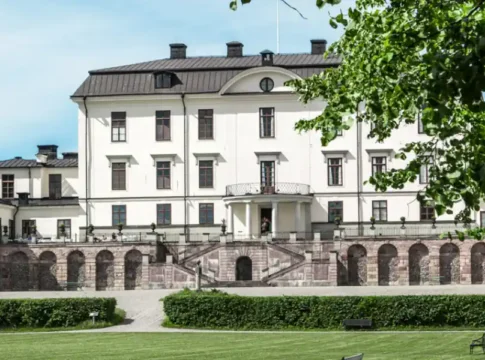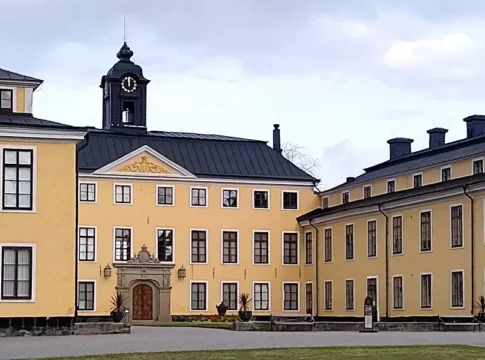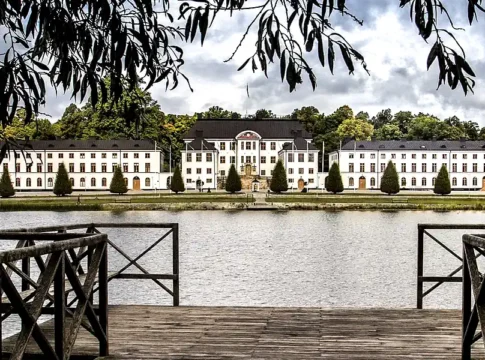Chinese Pavilion—18th-century Royal Chinoiserie in Drottningholm
Set within the UNESCO-listed Drottningholm Palace Park just outside Stockholm, the Chinese Pavilion is a dazzling example of 18th-century chinoiserie. Built in 1753 as a surprise birthday gift from King Adolf Frederick to Queen Lovisa Ulrika, this architectural jewel blends French Rococo design with exotic Eastern motifs—reflecting Sweden’s historical fascination with the Orient.
Chinoiserie meets Swedish royal elegance
The pavilion’s design was led by renowned architect Carl Fredrik Adelcrantz, who masterfully fused traditional Chinese features with the fluid curves of Rococo. The exterior features vibrant colors and ornate wooden carvings, while the interiors dazzle with lacquered furnishings, silk wallpapers, and hand-painted murals that depict imagined Eastern landscapes.
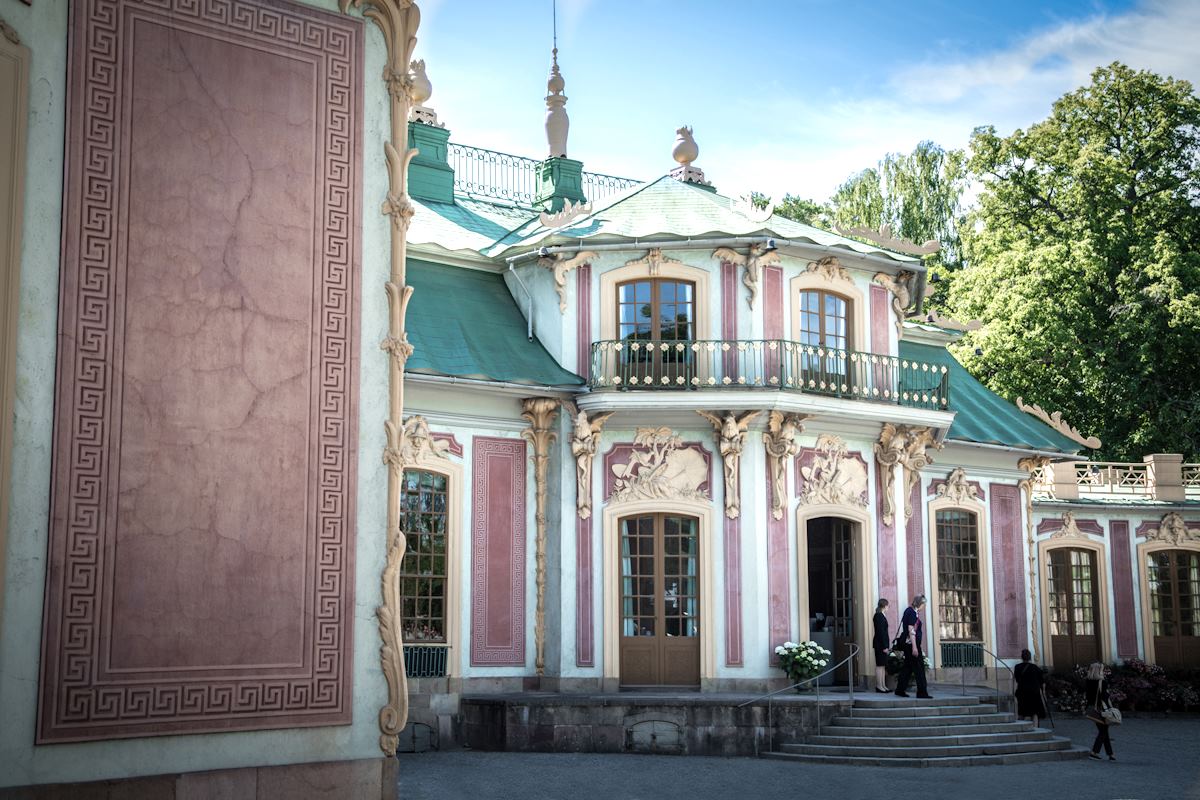
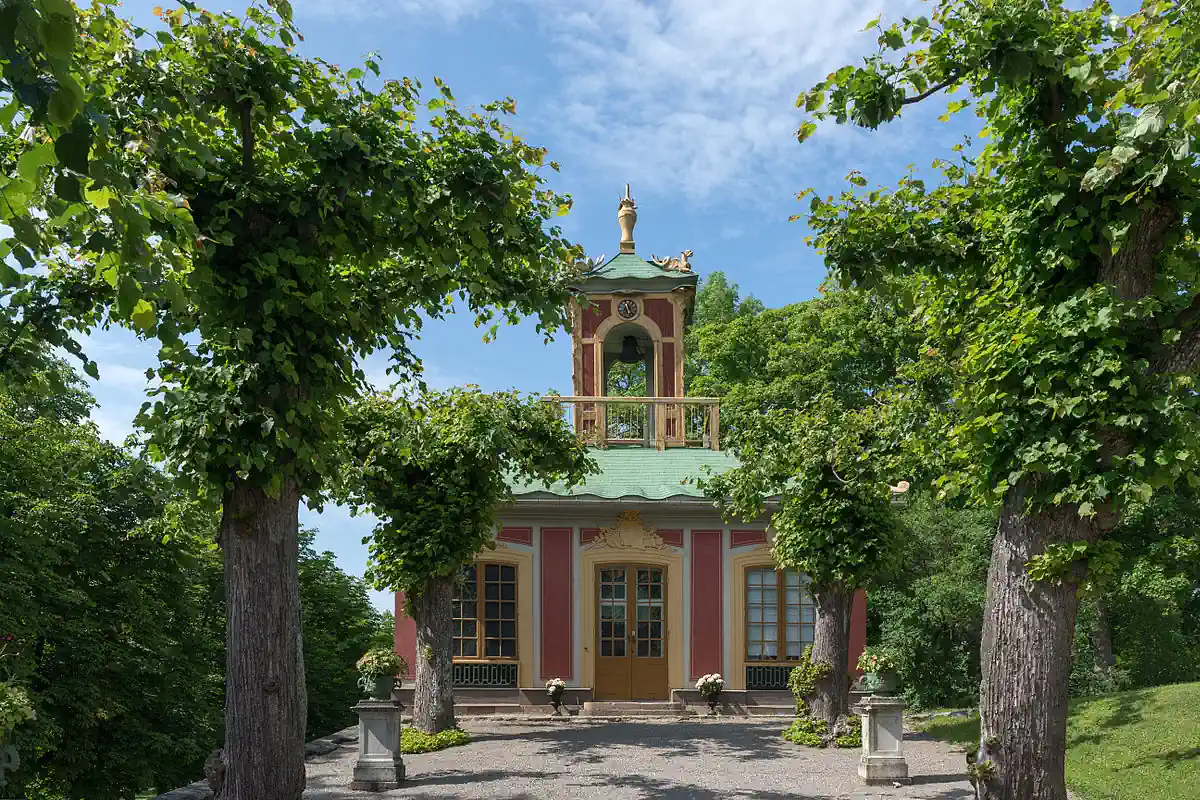
The Confidensen: Dining in secrecy
Just north of the Pavilion lies the Confidensen, a unique historic dining venue. Royals dined in private here thanks to a hidden system where food was raised from below without servants being present—hence the name, derived from the French for “in confidence.” Today, this charming space serves as a summer café steeped in royal tradition.
Scenic surroundings in Drottningholm Palace Park
Surrounded by peaceful lakes, manicured gardens, and nearby landmarks like the Drottningholm Court Theatre, the Chinese Pavilion invites leisurely walks, tranquil views, and a deeper appreciation of Sweden’s global aesthetic influences during the 18th century.



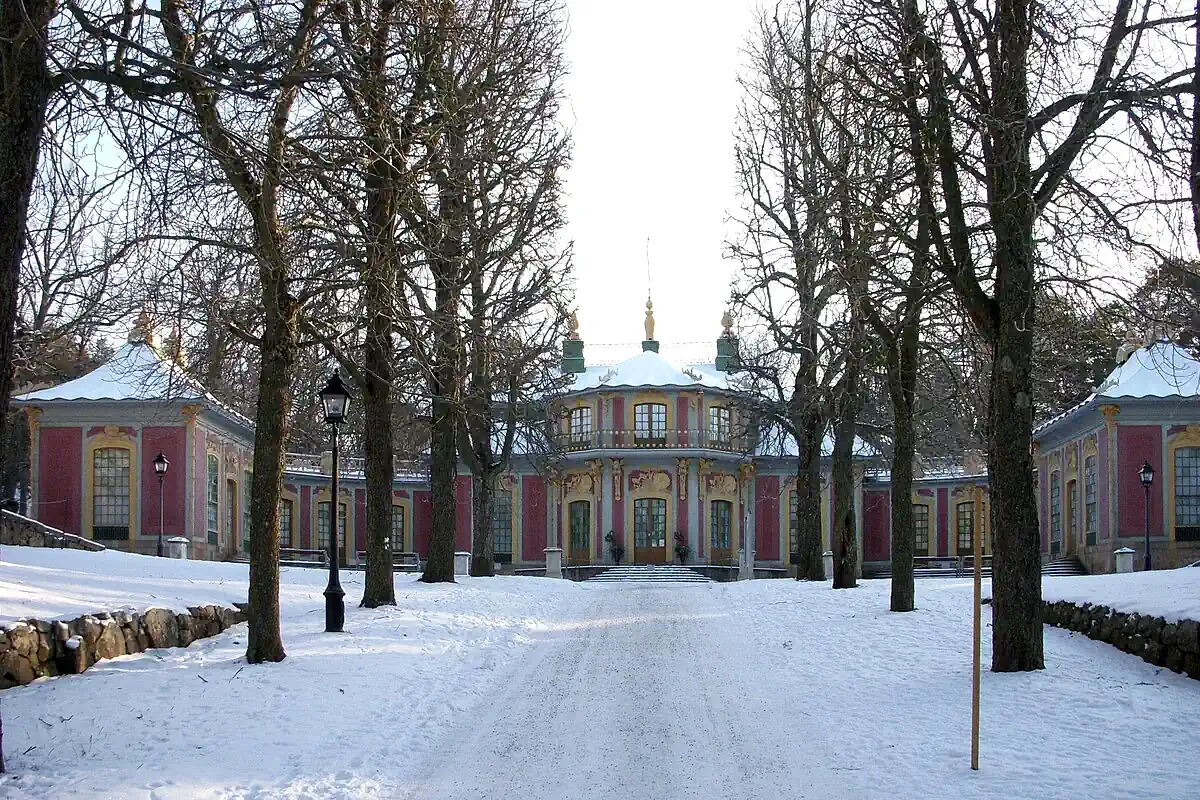


A venue rich in history
The Chinese Pavilion was more than a royal curiosity—it was a setting for diplomatic encounters, cross-cultural symbolism, and artistic exchange. Today, visitors can walk through its preserved interiors and relive the fascination with the Far East that captivated European courts.
Visitor information
- 🕰️ Opening Hours:
- May–September: Daily, 11:00 AM–5:00 PM
- 📍 Address: Drottningholm Palace Park, 178 93 Drottningholm
- 🚶♀️ Getting There: Take the metro to Brommaplan, then bus 176/177 to Drottningholm, or a scenic ferry from central Stockholm.
- 🔍 What to Expect: Chinoiserie interiors, royal history, tranquil gardens, and seasonal café service.
- 🎟️ Admission: Entrance fees apply. Discounts for students, seniors, and children. Free entry for children under 7.
- 🎧 Guided Tours: Self-guided visits with audio guides in Swedish and English.
- ☕ Café: Open in summer. Light refreshments are available at the Confidensen café nearby.
- 🛍️ Gift Shop: Souvenirs available at the Royal Palace shop within the Drottningholm grounds.


